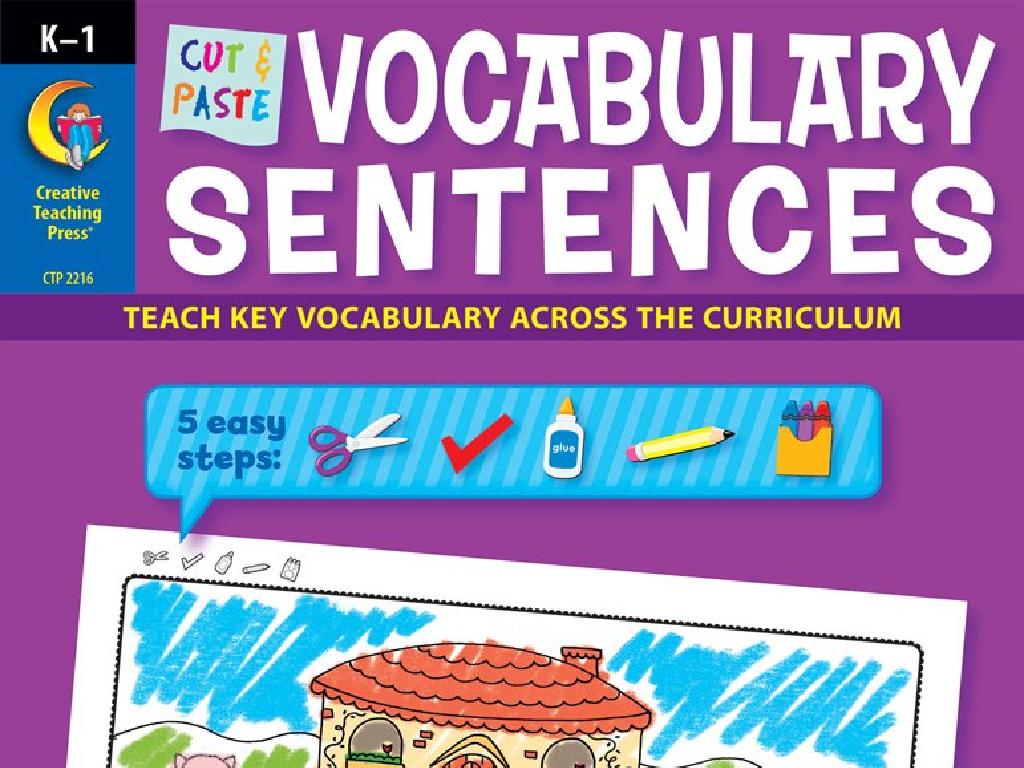Add Fractions With Like Denominators Using Number Lines
Subject: Math
Grade: Fourth grade
Topic: Understand Fraction Addition And Subtraction
Please LOG IN to download the presentation. Access is available to registered users only.
View More Content
Fraction Fun: Adding Like Denominators
– Quick recap of fractions
– Fractions represent parts of a whole
– Explaining like denominators
– Like denominators mean the bottom numbers in fractions are the same
– How to add fractions on a number line
– Place fractions on a number line and step forward to add
– Practice with examples
– Let’s try 1/4 + 2/4 on a number line together
|
Begin with a brief review of what fractions are, emphasizing that they represent parts of a whole. This will help students recall prior knowledge and prepare them for new concepts. Next, explain that like denominators are fractions that have the same bottom number, which makes them easier to add. Demonstrate how to add fractions using a number line by starting at the first fraction and ‘walking’ forward the distance of the second fraction. Provide clear examples, such as adding 1/4 to 2/4, and show this process on the number line. Encourage students to visualize the addition and understand that the numerators are being added while the denominator remains the same. Prepare to guide students through practice problems and ensure they grasp the concept of adding fractions with like denominators.
Understanding Fractions
– A fraction is part of a whole
– Like a slice of pizza is a part of a whole pizza
– Numerator and denominator explained
– Top number (numerator) is the part you have, bottom number (denominator) is the total parts
– Example: 1/4 of a pizza
– If a pizza is cut into 4 pieces, 1/4 is one of those pieces
|
Begin the lesson by explaining that a fraction represents a part of a whole, using tangible examples like pizza slices to illustrate the concept. Clarify the roles of the numerator and denominator, ensuring students understand that the numerator indicates how many parts are being considered, while the denominator shows the total number of equal parts in the whole. Use a visual example, such as a drawing of a pizza cut into four pieces, to demonstrate what 1/4 of a pizza looks like. This foundational understanding of fractions is crucial before moving on to addition and subtraction of fractions using number lines.
Adding Fractions with Like Denominators
– Understanding like denominators
– Denominators are the same, like both being 3 in 1/3 and 2/3
– Example: Adding 1/3 and 2/3
– When we add 1/3 to 2/3, we get 3/3, which is the same as 1 whole
– Using a number line for addition
– Place fractions on a number line and see how they add up to make a whole
– Practice with different fractions
|
This slide introduces students to the concept of adding fractions with like denominators. Begin by explaining that like denominators are when the bottom numbers in fractions are the same. Use the example of 1/3 and 2/3 to show how easy it is to add fractions when the denominators match. Demonstrate using a number line to visually represent the addition of fractions, which helps students understand how fractions combine to make whole numbers or larger fractions. Encourage students to practice with different fractions with like denominators to reinforce the concept. Provide additional examples and ensure to clarify any misconceptions about adding fractions.
Visualizing Fractions on a Number Line
– Number lines show fraction values
– Every fraction has a unique spot
– Marking 1/4, 2/4, 3/4 on the line
– These are examples of fractions with like denominators
– Adding fractions using the line
– Step by step, we can see how fractions add up visually
|
This slide is aimed at helping fourth-grade students understand how to visualize fractions using a number line. A number line is a useful tool for comparing and adding fractions because it clearly shows the size of fractions relative to each other. Students should learn that each point on the number line represents a unique fraction. By marking fractions like 1/4, 2/4, and 3/4, students can see that these fractions are equally spaced and have the same denominator, making them easier to add. The activity will involve students marking these fractions on a number line and then visually demonstrating how to add fractions with like denominators by simply moving along the number line. This visual approach reinforces the concept of addition as ‘putting together’ parts of a whole.
Adding Fractions with Like Denominators
– Combine the numerators to add
– Keep the denominator same
– Example: 1/4 + 2/4
– Add the top numbers of 1/4 and 2/4
– Result: 3/4 on a number line
– Show 3/4 on the number line as a visual aid
|
This slide introduces the concept of adding fractions with like denominators. Emphasize to the students that when adding fractions, the bottom number (the denominator) remains unchanged because it represents the total number of equal parts the whole is divided into. The top numbers (the numerators) are added together to find the sum. Use the example 1/4 + 2/4 to illustrate this point. Show how to combine the numerators (1+2) and place the sum over the original denominator to get 3/4. Use a number line to visually demonstrate how 1/4 and 2/4 add up to 3/4, reinforcing the concept that the fractions are parts of a whole. This visual representation will help students better understand the process of adding fractions.
Let’s Practice Adding Fractions on a Number Line!
– Example 1: Add 1/5 + 2/5
– Start at 1/5 on the number line, move 2/5 steps to land on 3/5
– Example 2: Add 3/8 + 2/8
– Begin at 3/8, take 2/8 steps more to reach 5/8
– Discuss methods with a partner
– Share how you found the answers
|
This slide is an interactive class activity designed to help students practice adding fractions with like denominators using a number line. For Example 1, demonstrate how to locate 1/5 on the number line and then move forward by 2/5 to find the sum. Repeat a similar process for Example 2 with 3/8 and 2/8. Encourage students to work with a partner to discuss their approach and solidify their understanding. After the activity, ask students to share their methods and answers with the class to ensure comprehension and to highlight different strategies. Provide guidance and support as needed and ensure each student is comfortable with the concept before moving on.
Class Activity: Fraction Number Line Art
– Create a number line with fractions
– Draw a line and mark equal spaces for fractions like 1/4, 2/4, 3/4…
– Add fractions with like denominators
– Practice adding fractions: 1/4 + 2/4 = 3/4
– Color sections to make Fraction Art
– Use colors to fill in each fraction section differently
|
This activity is designed to help students visualize fraction addition on a number line. Provide students with paper, rulers, and colored pencils or markers. Guide them to draw a number line and equally space out fractions with the same denominator. Then, instruct them to add fractions by jumping spaces on the number line. As they add, they should color in the sections to create a visual representation of the sum. This will help them understand how fractions add up and reinforce the concept of like denominators. Encourage creativity in coloring to make the activity engaging. Possible variations include using different denominators that are multiples of each other or creating a collaborative number line mural as a class.
Conclusion & Homework: Fraction Fun!
– Excellent work on adding fractions!
– Homework: Fraction Addition Worksheet
– Practice what we’ve learned today
– Create your Fraction Art
– Use your creativity to make art with fractions
– Show and tell your art tomorrow
– Be prepared to present your masterpiece
|
Today’s lesson focused on adding fractions with like denominators using number lines. The students did a great job grasping the concept. For homework, they are assigned a Fraction Addition Worksheet to reinforce their understanding. Additionally, they are encouraged to create Fraction Art, which will integrate their math skills with creativity. This art project will help solidify their understanding of fractions in a fun and engaging way. Tomorrow, we will have a show and tell, allowing students to share their artwork and explain the fractions used, fostering a sense of accomplishment and public speaking skills.





